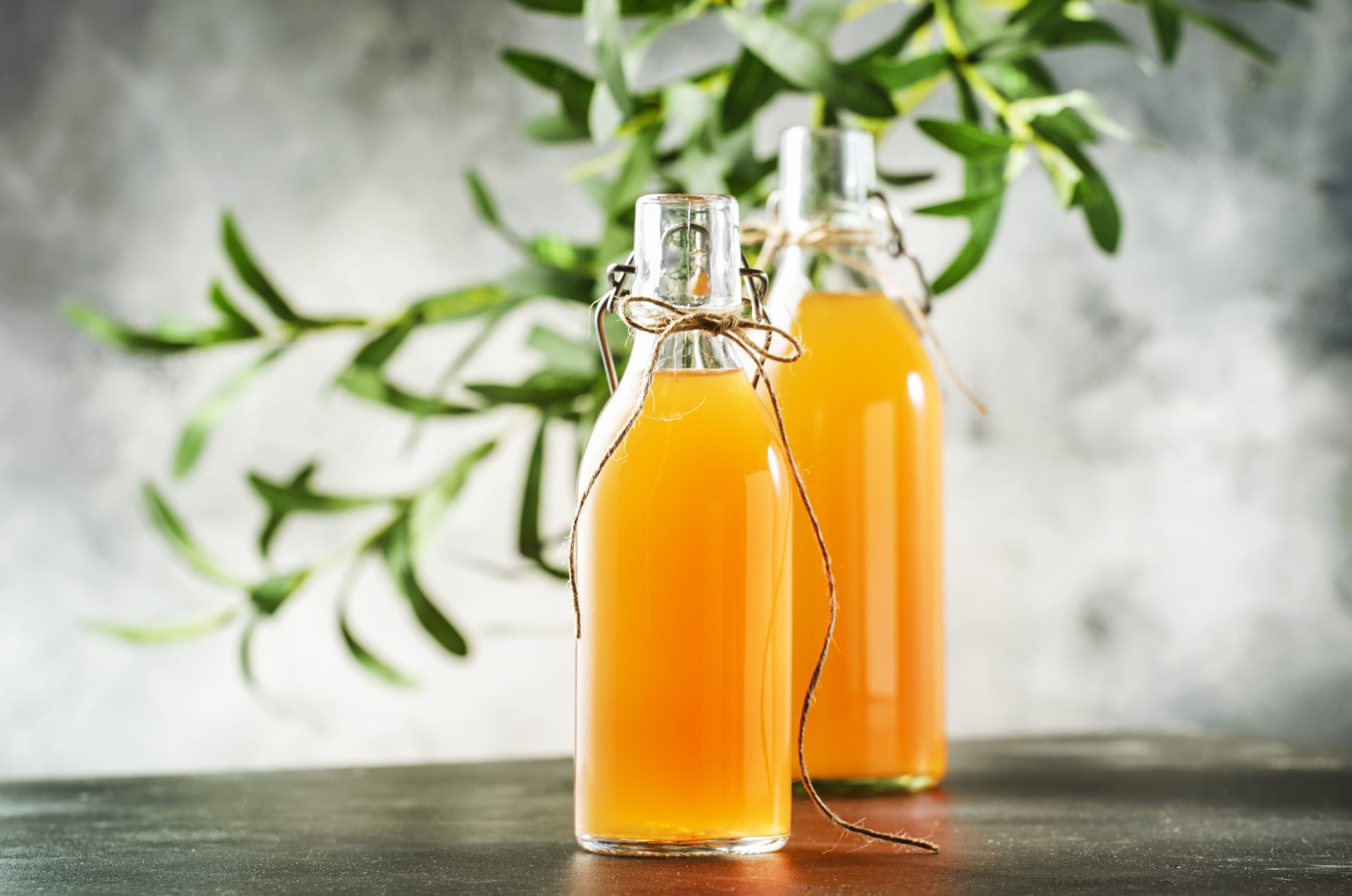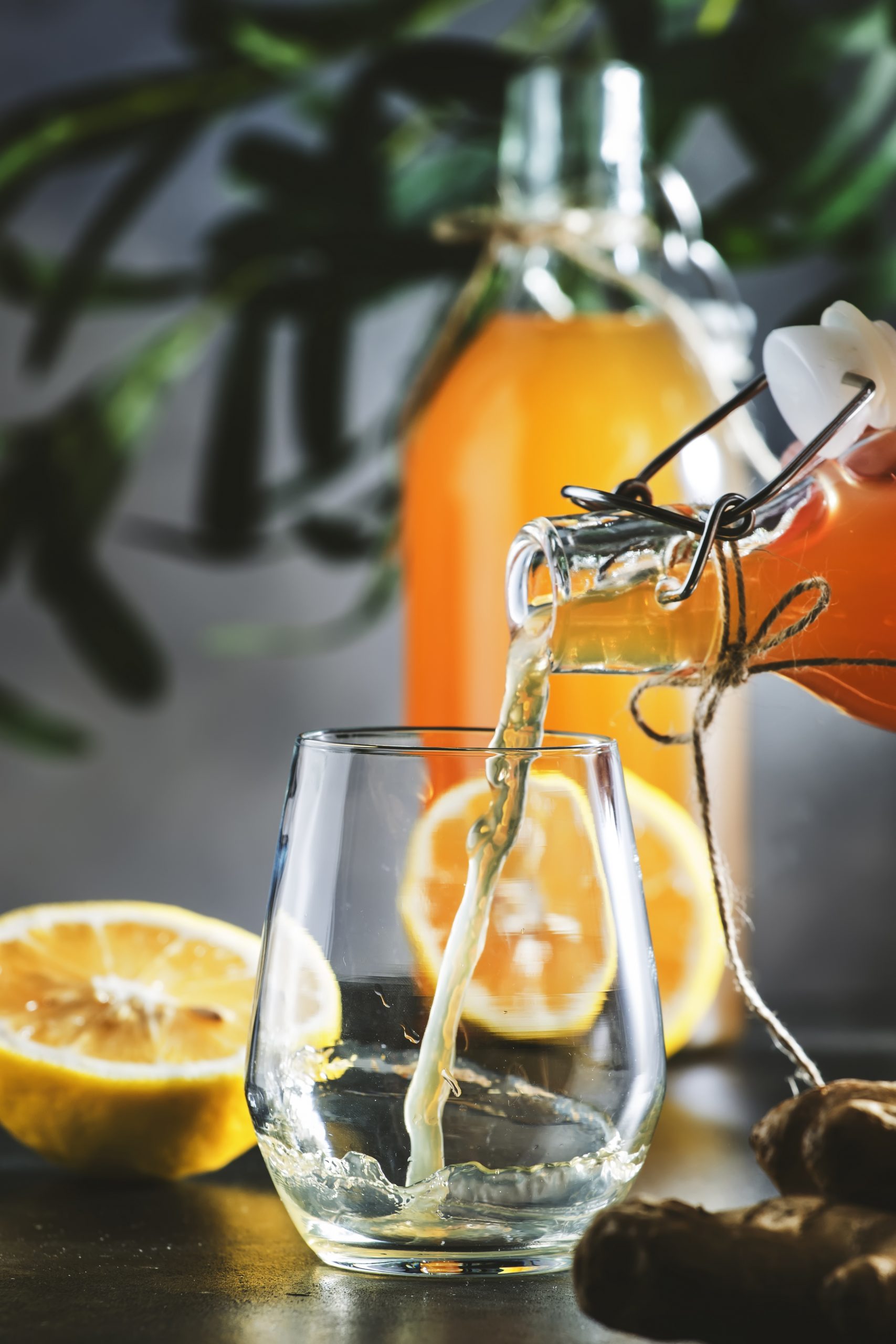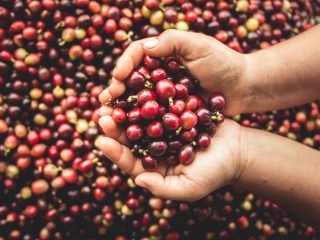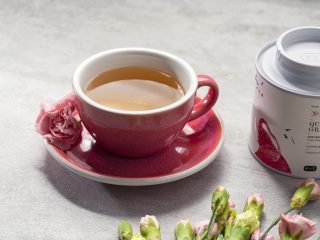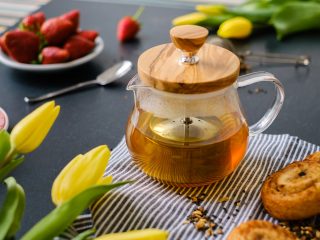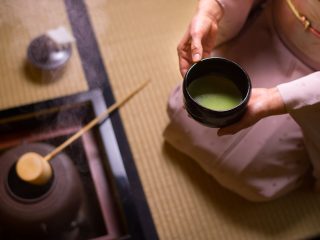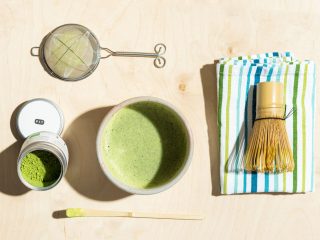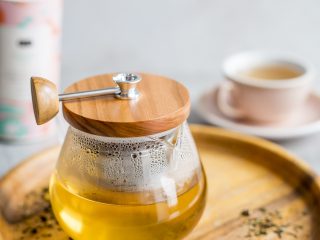Coffee and tea based cocktails, infusions, extracts…these are merely (delicious) drops in the ocean of endless possibilities. In the world of artisan drinks, craft brewing and constant search for novelty, the well-known evergreens such as iced tea or coffee are being challenged by new, alcohol-free alternatives. Let’s talk about one that won the hearts of millions of health freaks, foodies and everyone who is all about kitchen experiments – ladies and gentlemen, I proudly present to you…the one and only kombucha!
Fermented tea?
Kombucha remains a mystery to many consumers. Fermented tea? Sounds extreme. I remember seeing it for the very first time on my flatmate’s kitchen shelf – a jar full of strangely looking liquid, with a questionable jelly floating on top. There was no way on earth I was going to try it. Fast forward six years later and… my kitchen has been dominated by jars and Scobys hard at work making all kinds of ferments. I officially joined the movement – and so did many others, causing kombucha to enter the mainstream.
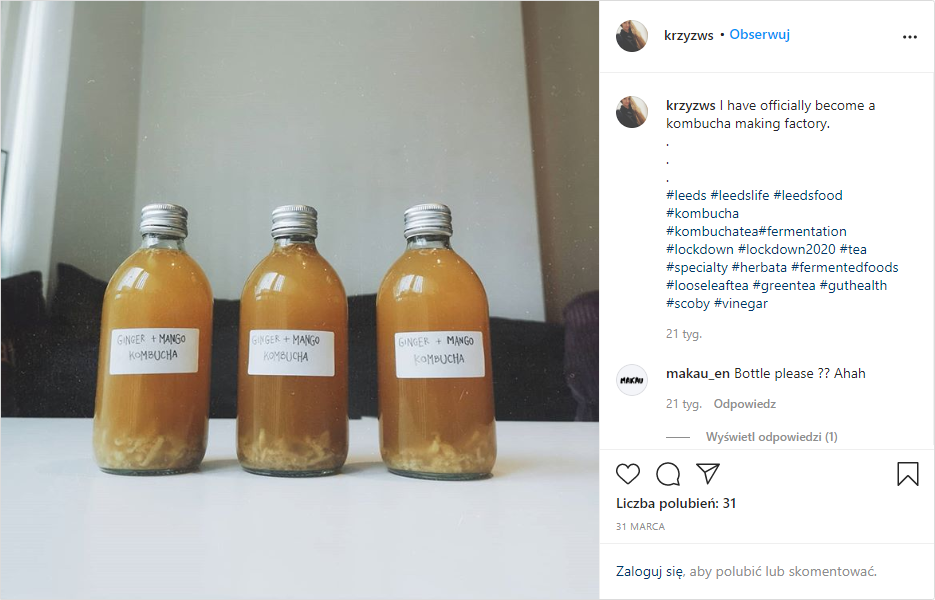
A brief history of kombucha
What exactly is this mysterious concoction? Kombucha is made by fermenting sweetened tea using a Scoby (Symbiotic Culture of Bacteria and Yeast). Although seemingly extravagant, foods processed this way have been around for thousands of years and archeological findings suggest fermentation was practiced in many cultures throughout history. The exact origin remains unknown, however Japan and China seem the most likely. As merchants equipped with flasks of kombucha travelled the routes of the Silk Road to the West, it is probable that they introduced Europe to this exotic beverage. First credible sources do not mention until the nineteenth century, when Scoby and fermented tea gained immense popularity. “Tea kvass”, as Russians referred to it, was regularly served as refreshment to accompany the meal until the 90s, when it was replaced by coca-cola and other Western products. Nowadays kombucha is enjoying a renaissance – as we become more health-conscious and bored of overly sweet, artificial sodas, we look for alternatives and go back to the roots, reviving fermented products that pose a vital part of our culinary tradition.
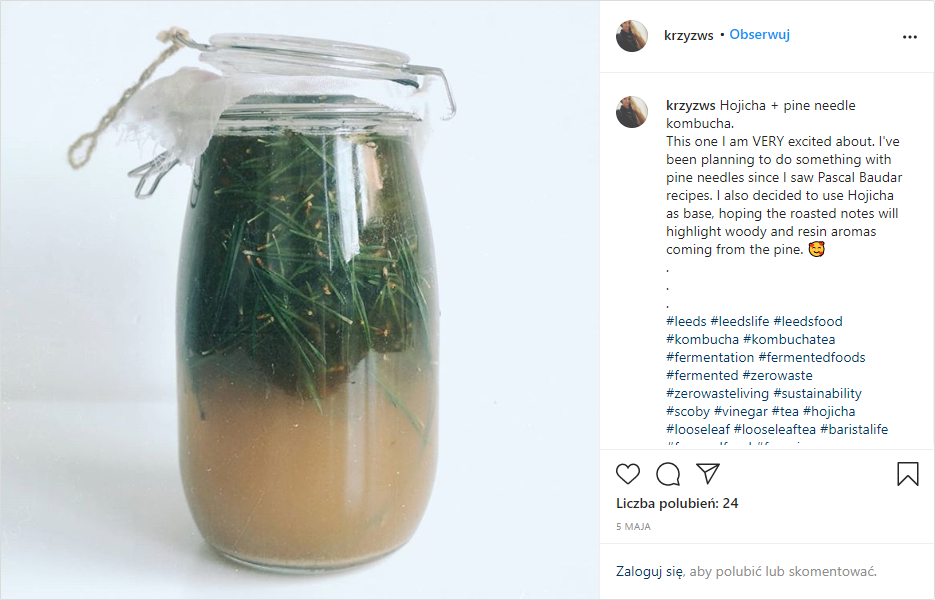
Fermented foods are also often claimed to offer a plethora of health benefits, such as improving digestion, which largely contributed to the hype surrounding kombucha. However, these effects are still under researched and it’s best to see our ‘mushroom tea’ as an unusual addition to our diet and alternative to artificial fizzy drinks, rather than a cure for all diseases.
Kombucha as sensory experience
I believe the secret of kombucha lies in its exceptional flavours and mouthfeel, the combination of which leads to an unforgettable sensory experience. Naturally carbonated, it accentuates fruitiness in leaves and beans in a way that is unachievable through traditional methods. As if that was not enough, kombucha is a fantastic #zerowaste hack – you can easily reuse coffee grounds, tea leaves, fruit skins, make homemade vinegars… possibilities truly are endless.
How to make kombucha?
How do we start? In order to make kombucha, you need a Scoby – the jelly that floats on top of the jar and consists of millions of tiny, powerful organisms, ready to ferment your tea. You can easily purchase one online and local health food shops. Mine was a gift from a friend – a Scoby mother will grow and have babies that can be separated and used as a starter for new batch (isn’t the vocabulary in kombucha community simply endearing?), or given away to friends 🙂
Next step is preparing a tea base. Admittedly, I use very rough measurements now – however, at the very beginning I was so terrified of accidentally killing my Scoby, I used a digital scale for everything.
Here is what you need to make a tea base:
- Sugar – plain white sugar is ideal. Unfortunately, sugar substitutes such as stevia, xylitol, erythritol, etc will not work for this recipe – some go as far as mixing sugar with honey or maple syrup in attempt to make it slightly healthier. This is understandable but also futile – the purpose of sugar here is food for our bacteria culture. By the time they are finished and your kombucha is ready, there will be very little of sugar left – in my humble opinion, it’s not worth sweating over.
- Tea – ideally unflavored (chemicals used for flavouring may damage your culture), loose leaf or tea bags -the choice is yours. I tend to use the latter as the kombucha base requires strong brew – very often this is where I will utilise unwanted Christmas/birthday presents – my family religiously gifts me with teas I wouldn’t necessarily purchase myself. Go bananas but keep in mind – only real tea made from Camellia Sinensis sinensis will create the right environment for our Scoby – herbal tisanes and fruit teas can be used as flavourings, not as a base.
Preparation:
Now that we gathered all necessary ingredients, it is time to make our tea base! My recipe is incredibly simple – 70 grams of sugar per 1000 grams of water and 4 teabags. Feel free to modify it according to your preferences! It is important to use unchlorinated water and wait for the tea base to cool down before you add a Scoby with its starter liquid – high temperatures are dangerous for our little jelly. Use a large jar, cleaned and thoroughly rinsed – any residue detergents will also negatively affect the Scoby (and your stomach). I often skip detergents and rinse mine with vinegar.
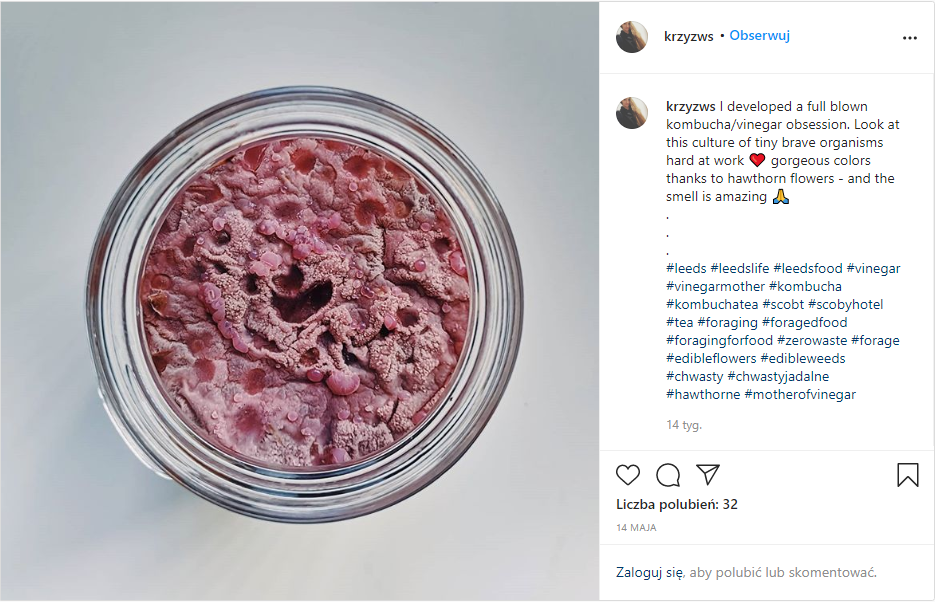
We’re almost done – all that is left now is covering the jar with breathable fabric (cheese cloth is ideal, you can also reuse cut up pieces of old cotton shirts) and placing it in a dark, warm and dry spot. Bacterias and yeast will take 7-10 days to transform your brew into kombucha, time depending on the temperature in the room. Taste it and see for yourself – there are no strict rules here, although it is often said that pH in kombucha should fall in between 2.5 and 3.5. You can invest in pH strips and test it or simply taste the booch every day and stop the fermentation when the flavours are subjectively right for you. Don’t worry too much as the worst that could happen if you wait too long is…vinegar. When you feel like your kombucha is ready, simply strain the liquid to a separate glass, leaving some of it with Scoby – this is going to be your starter for the next batch.
A little bit of experiments
That is all – not as complicated as one would expect, is it? In the beginning, when you are still a kombucha newbie, following the recipes carefully will save you a lot of headache – with time you will learn enough to experiment yourself, altering ratios, flavourings, even the tea base! You can also use Scoby to make coffee kombucha. It is a marvellous zero waste way to reuse coffee grounds – ideally light roast, as the fruitiness and floral notes are beautifully accentuated in cold, fizzy booch.
How to make coffee kombucha:
- 140 grams of sugar
- 1000 grams of water
- 400 grams of used coffee grounds or 115 grams of freshly ground coffee (preferable coarser grind for the latter)
- 80 grams of starter kombucha liquid
- Scoby
Preparation:
Bring water to a boil and add sugar, making sure it dissolves completely. Pour over coffee grounds, stir, wait for the liquid to cool down and keep in the fridge overnight. In the morning, strain the mixture through a fine filter and add the starter liquid and a Scoby. You can also use leftover batch brew – simply dissolve sugar in a small amount of water (so as to avoid diluting the coffee) and add to your cold batch, then follow the usual steps – be patient and taste the booch every now and then until you decide it is ready. Coffee kombucha can blow your taste buds away when done properly! However keep in mind that your Scoby will carry delicate coffee taste that can affect the flavour of your subsequent batches, when used in tea. This is why I will often use it for black tea kombucha, as green and white teas are easily overpowered.
Fermentation is a wonderful twist on traditional coffee and tea brewing and opens up a world of possibilities – all you need is some tea, a Scoby and a little bit of patience! Don’t forget to have some fun and share your recipes with us 🙂

